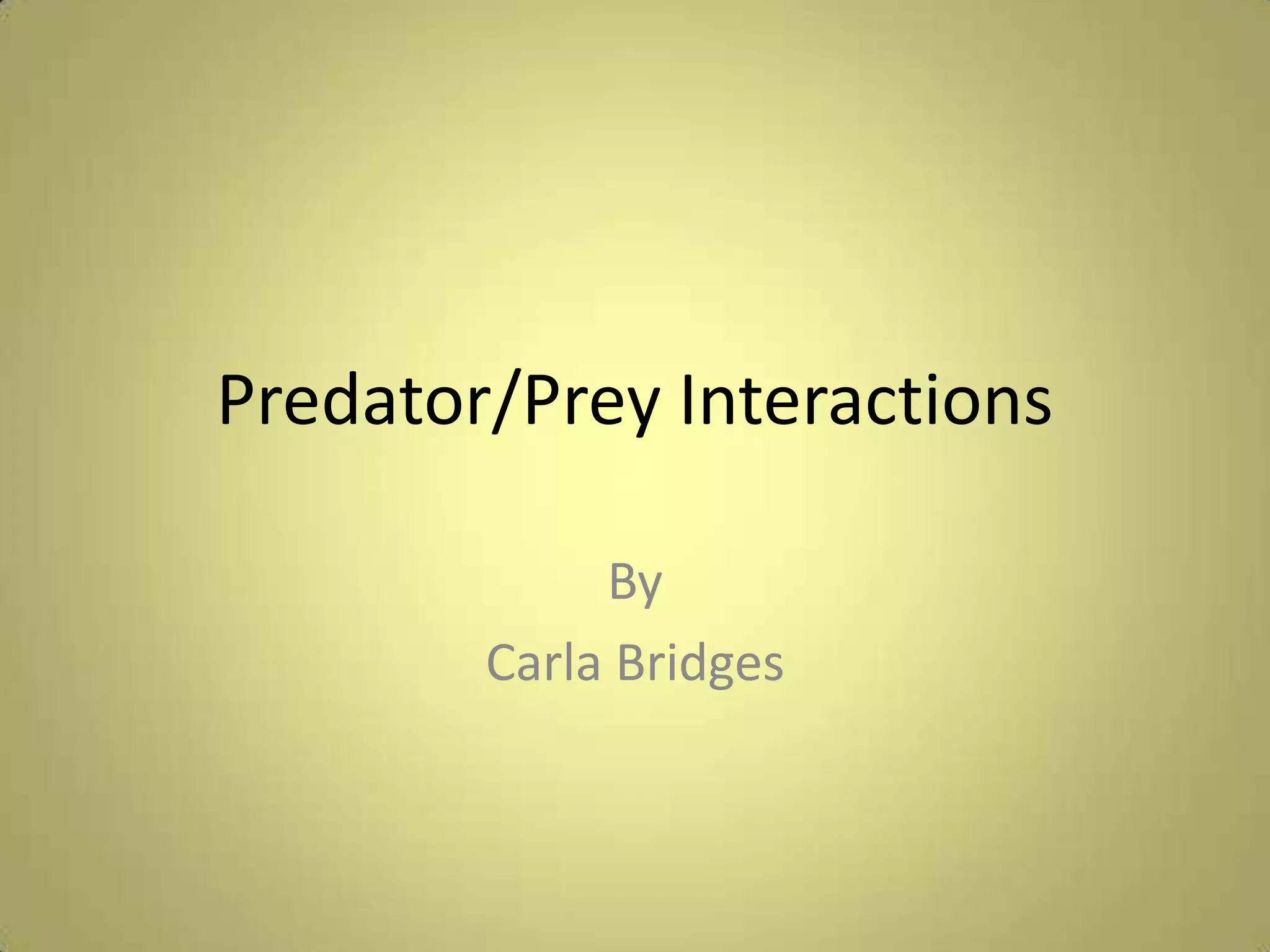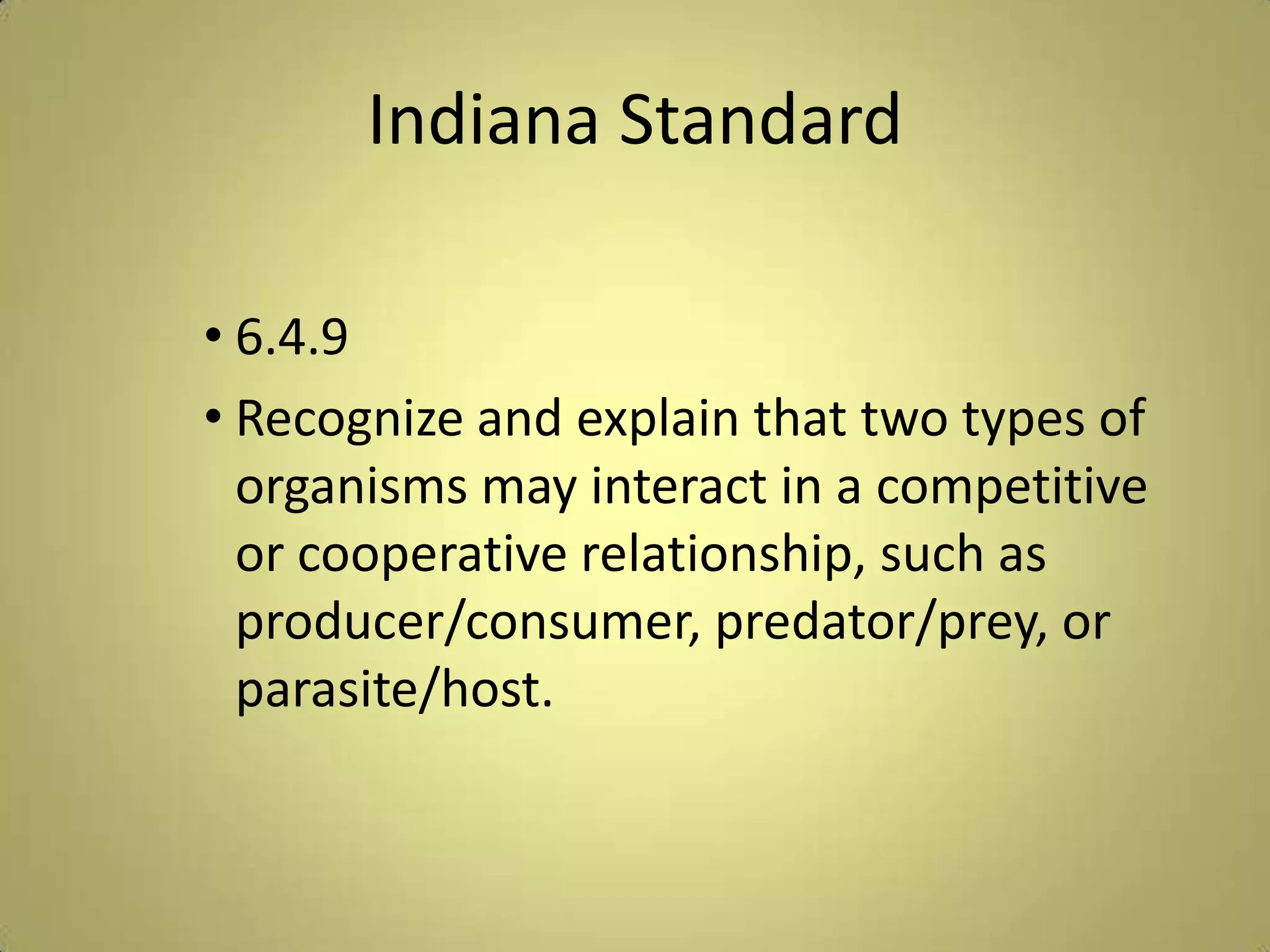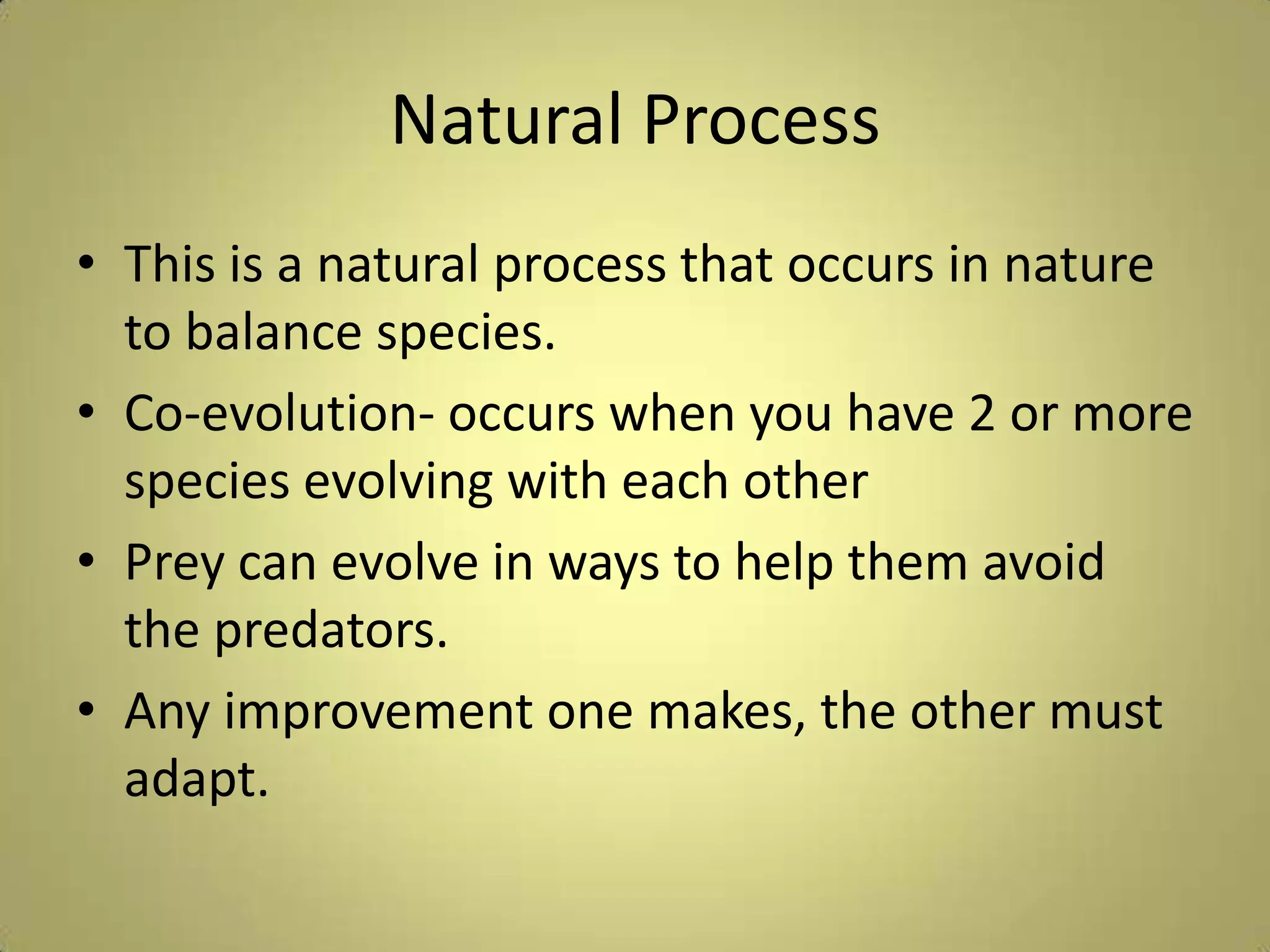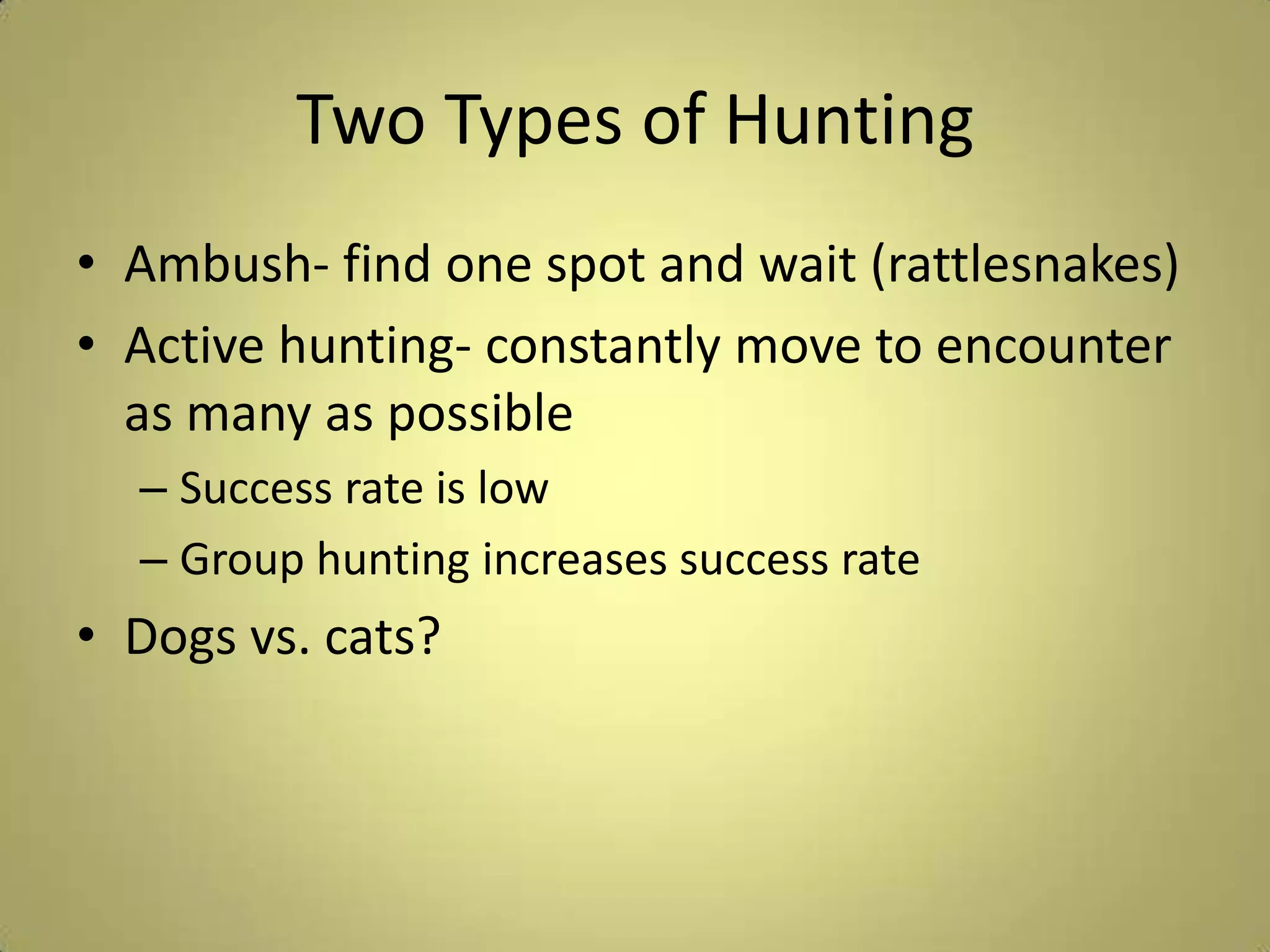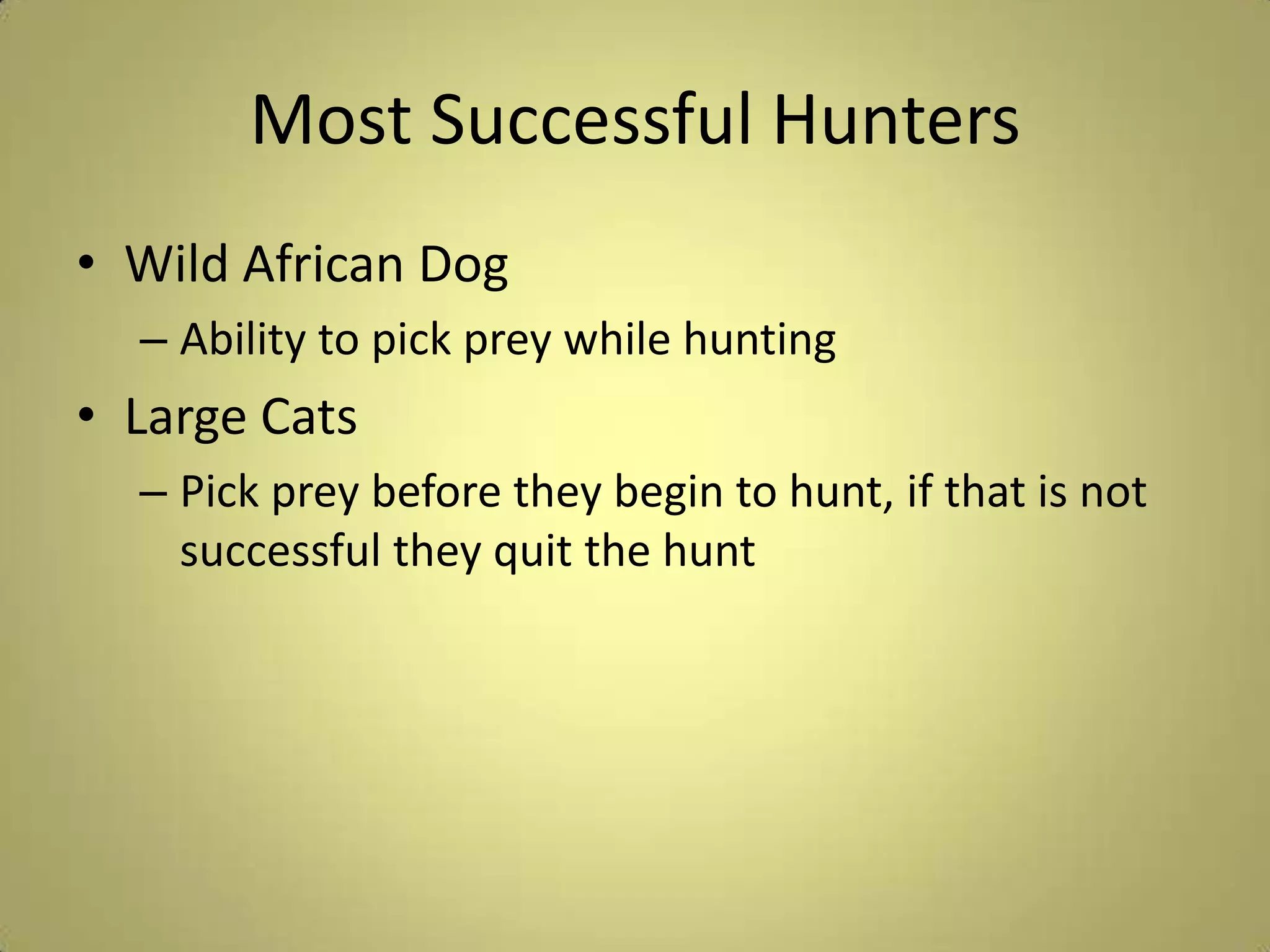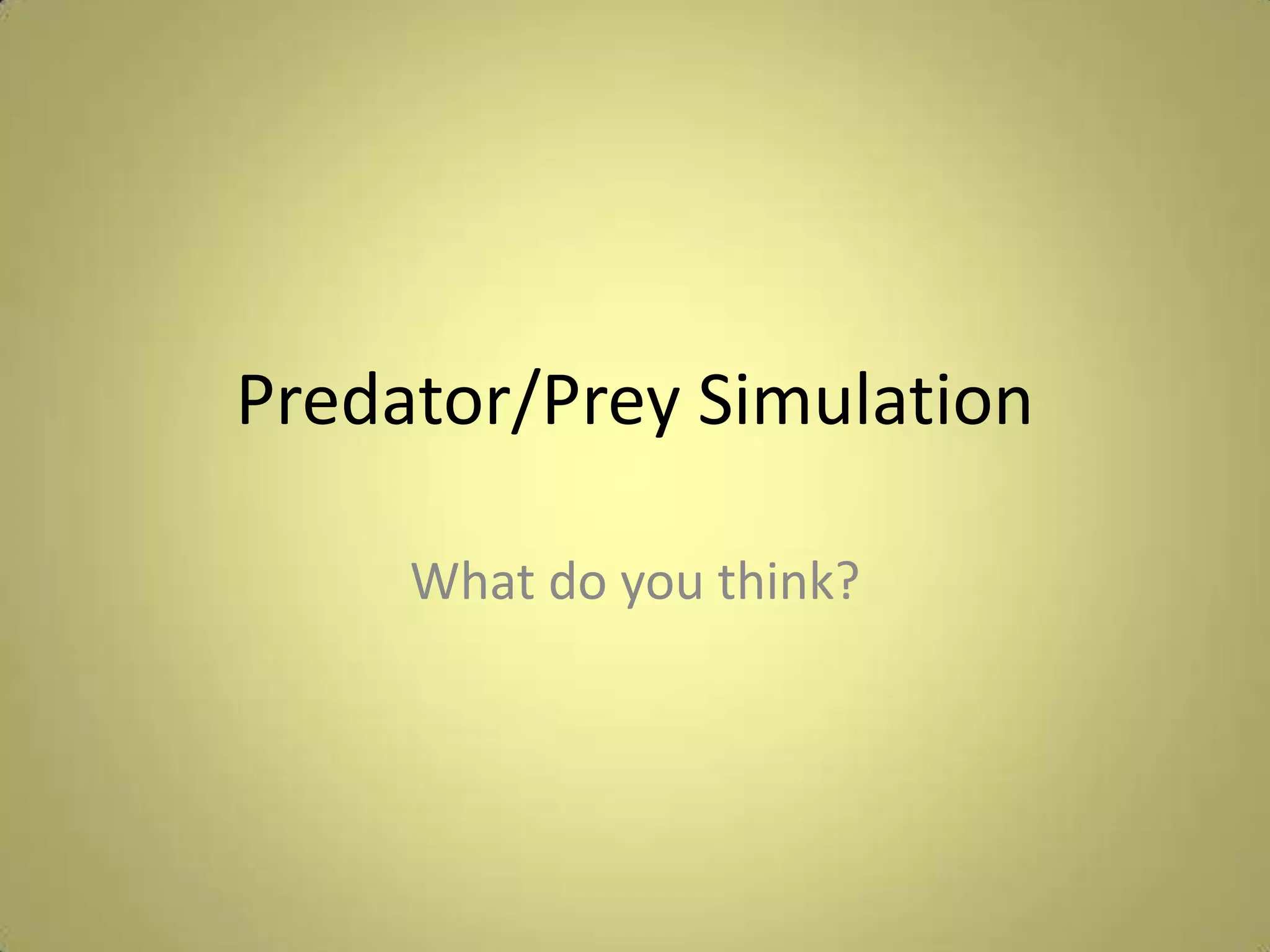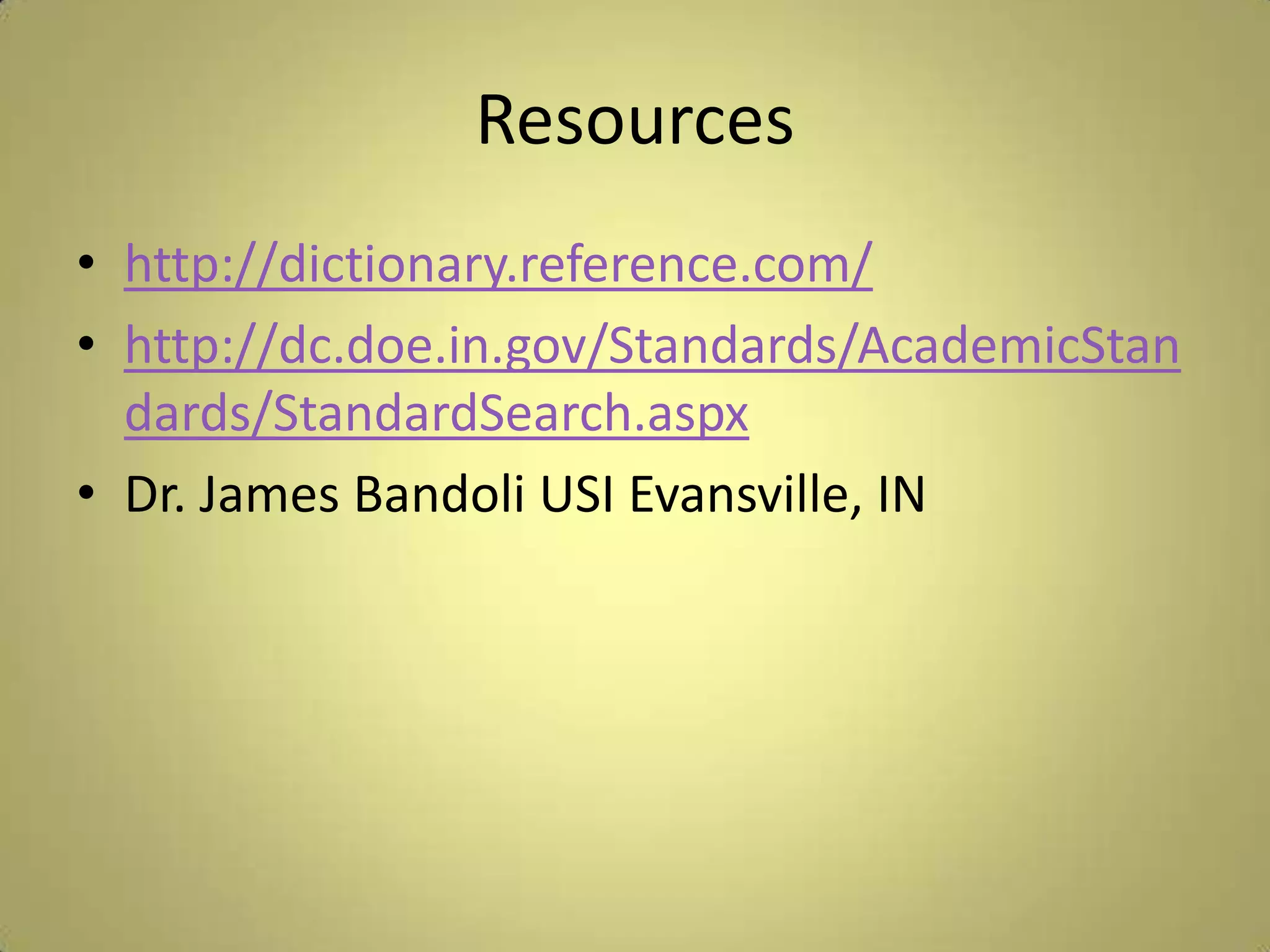This document discusses predator-prey interactions in nature. It explains that this is a natural process where prey evolve defenses to avoid predators while predators evolve ways to exploit prey. Prey avoidance methods include camouflage, defenses, mimicry, speed, living in groups, and size. Predators exploit prey through camouflage, patience, speed, senses, and group hunting. There are two types of hunting: ambush and active. Studies have shown predators both do and do not control prey populations, and a simulation could help understand these dynamics.
